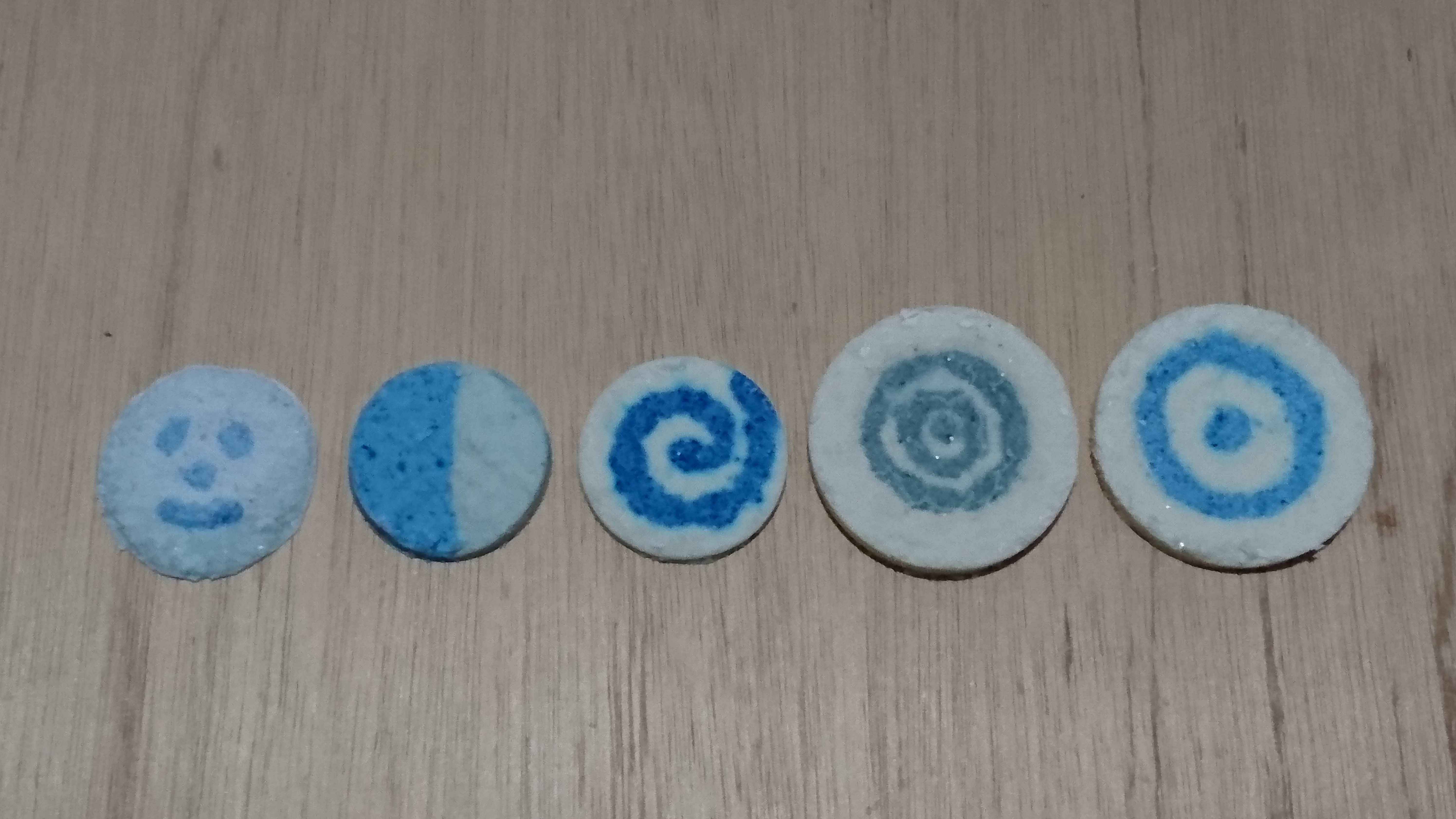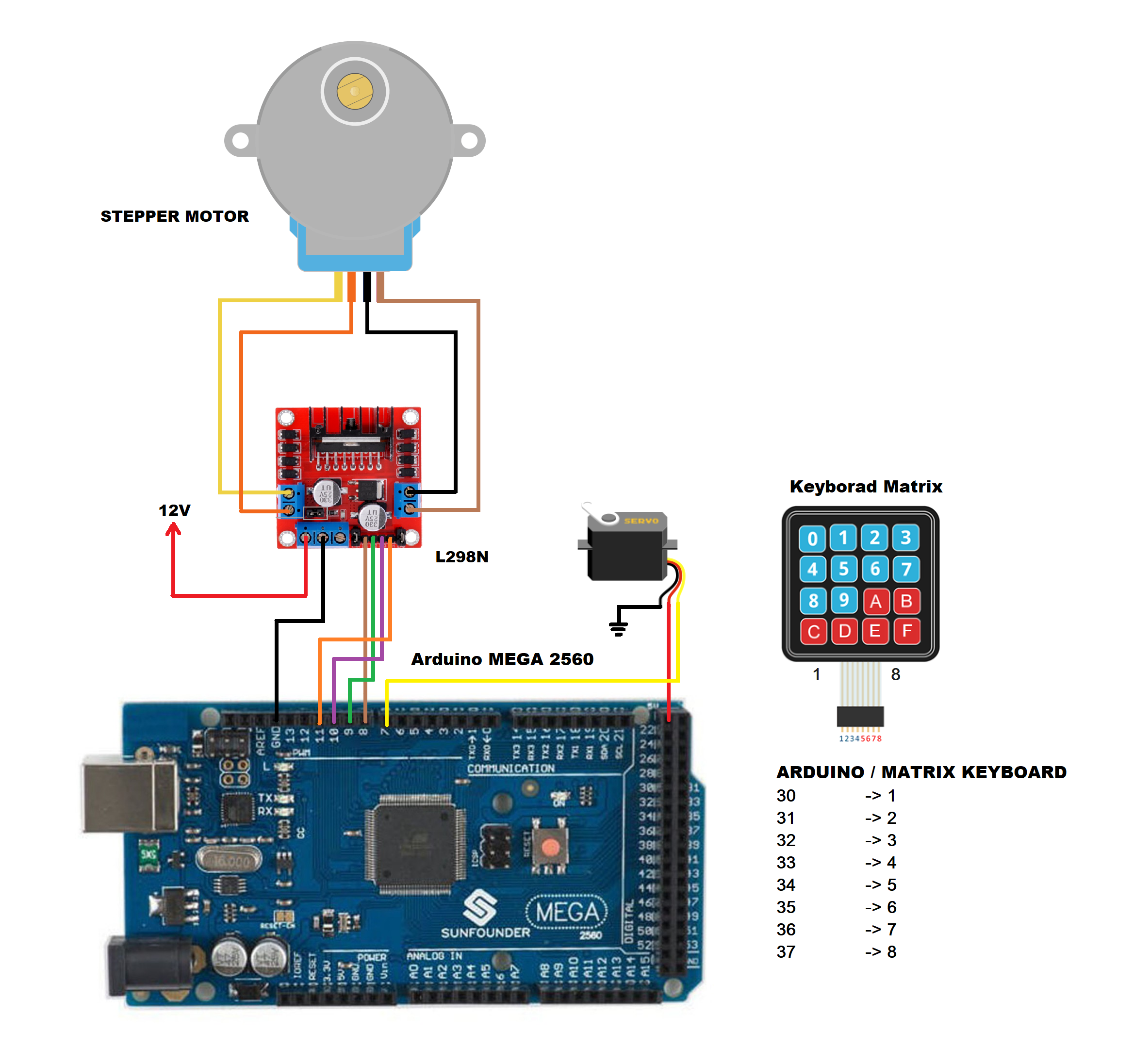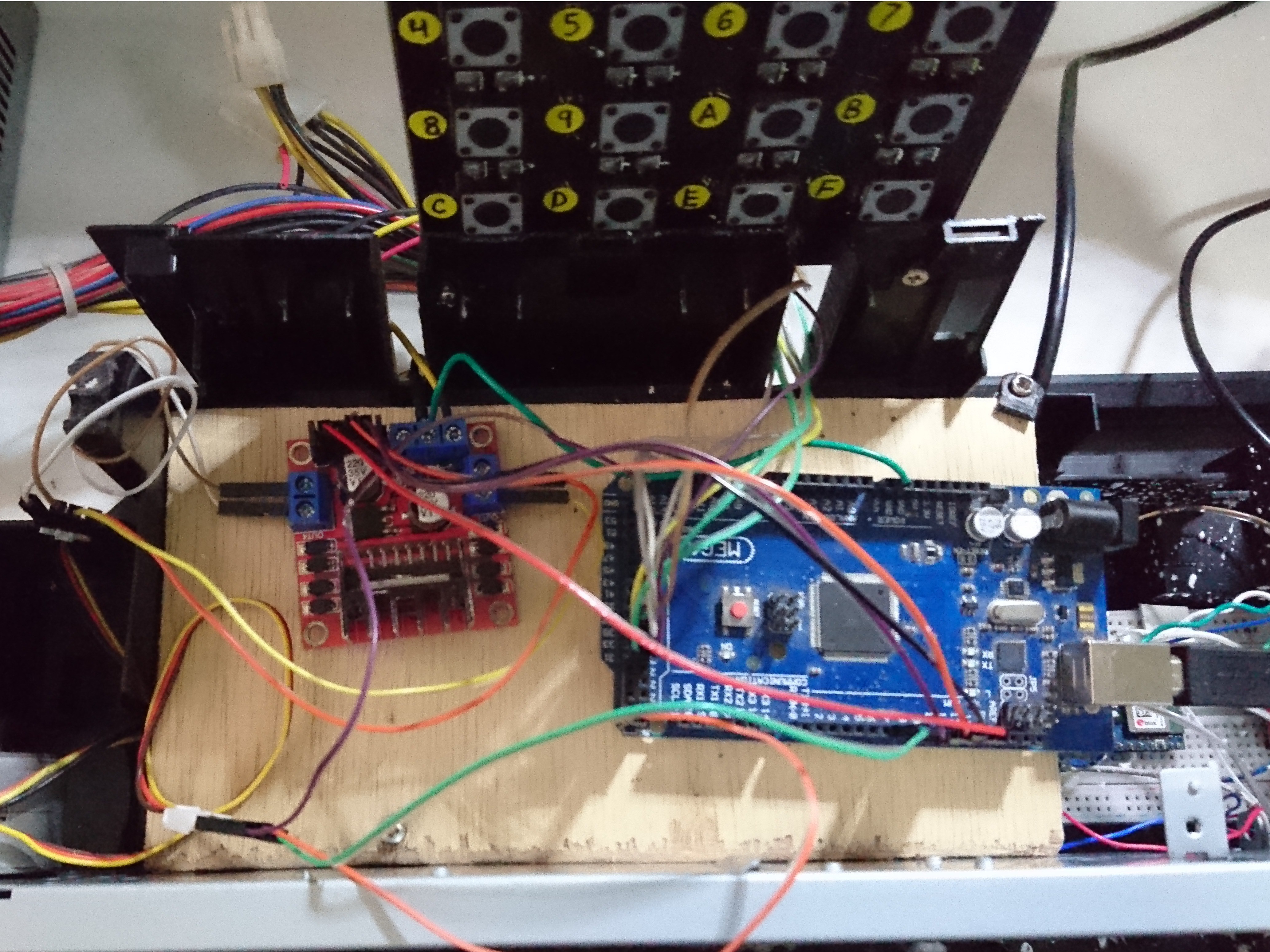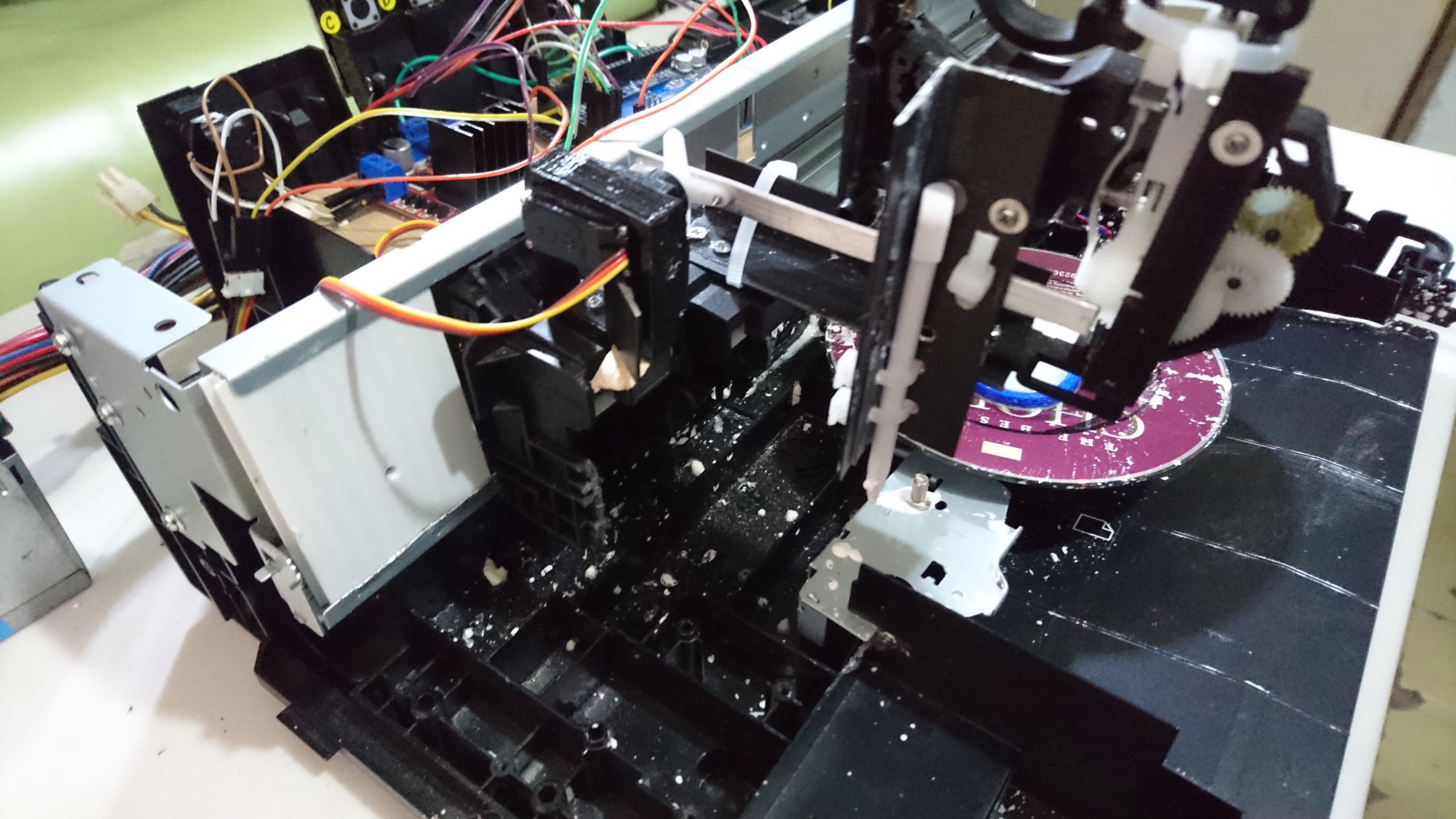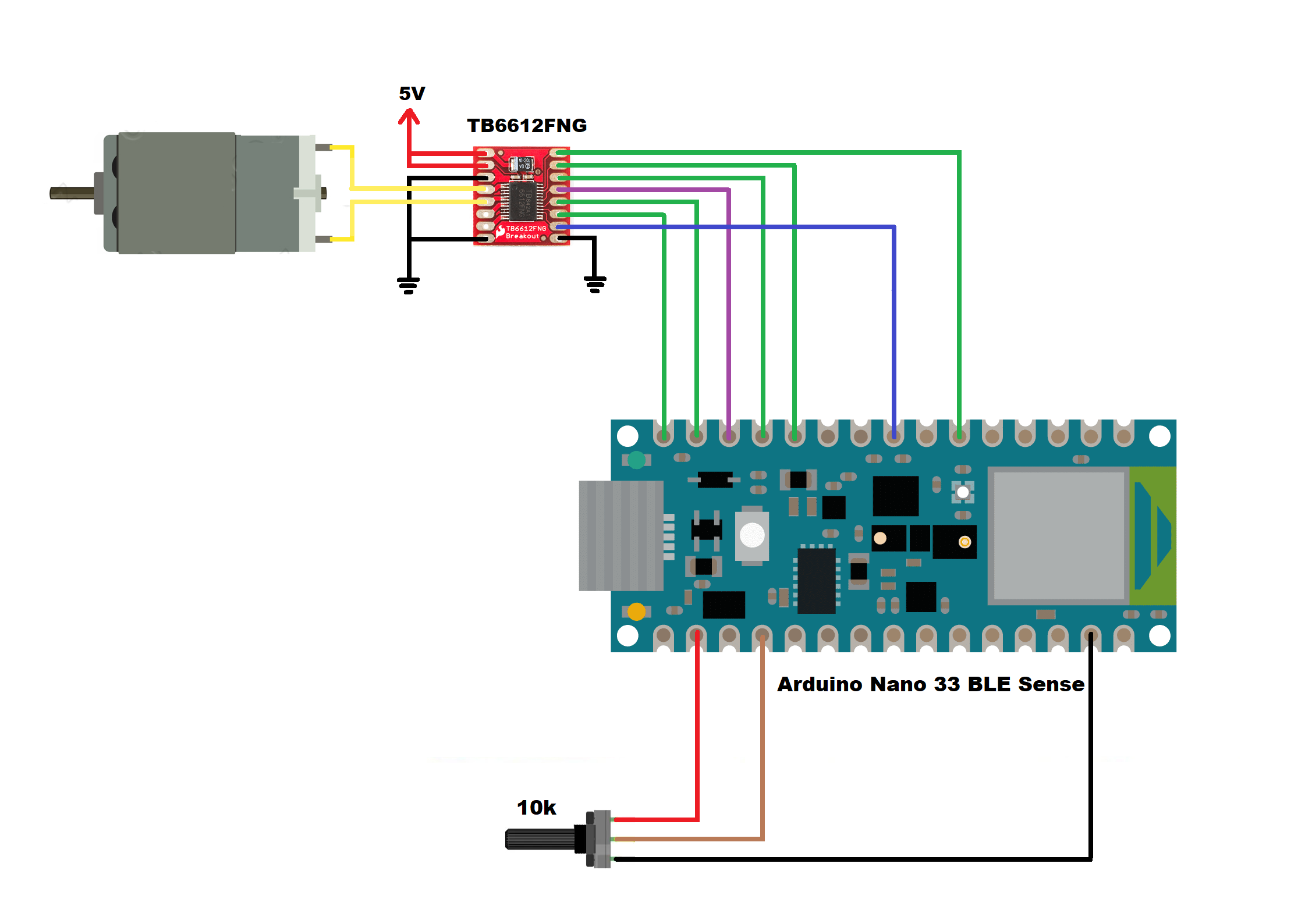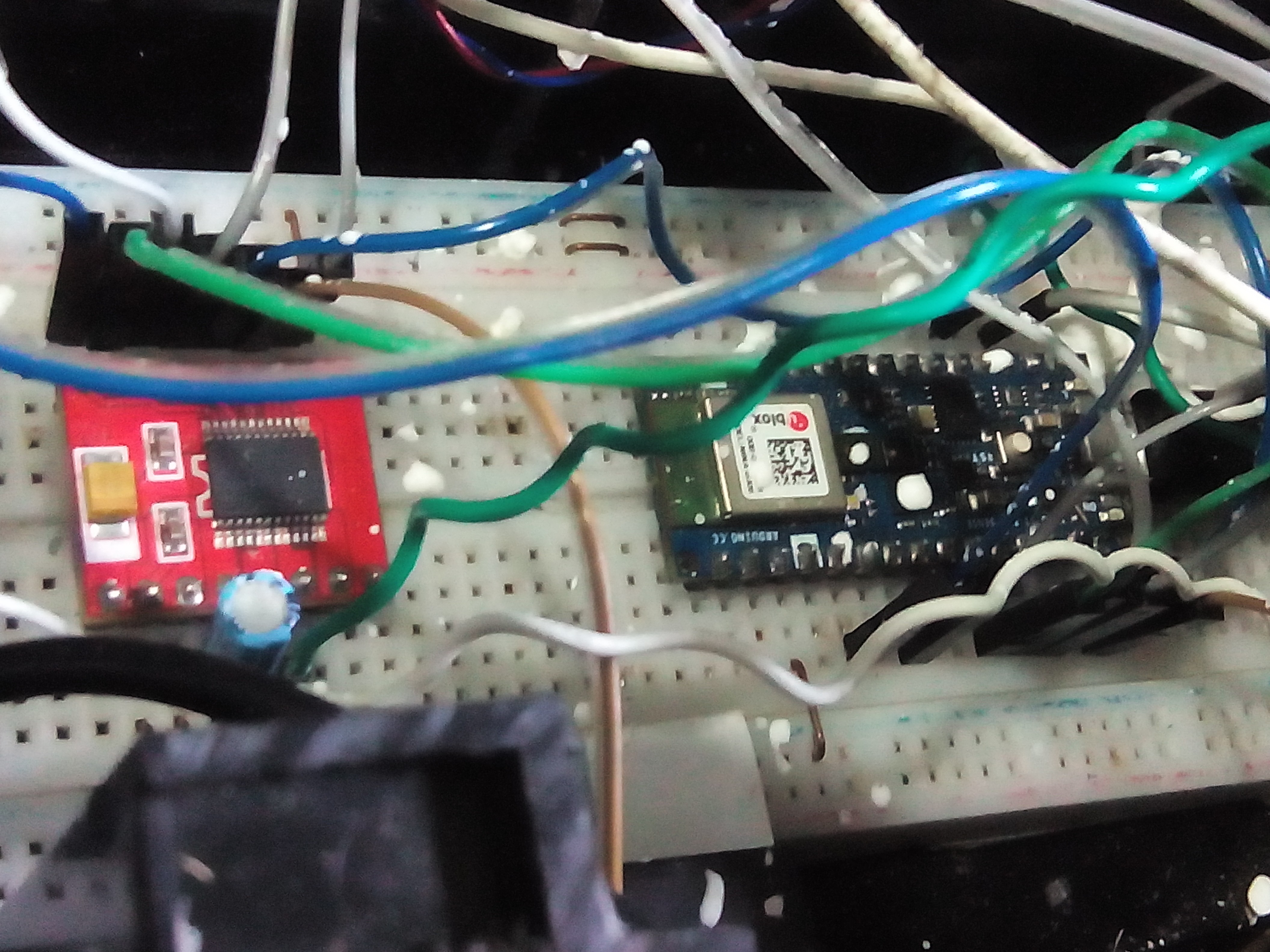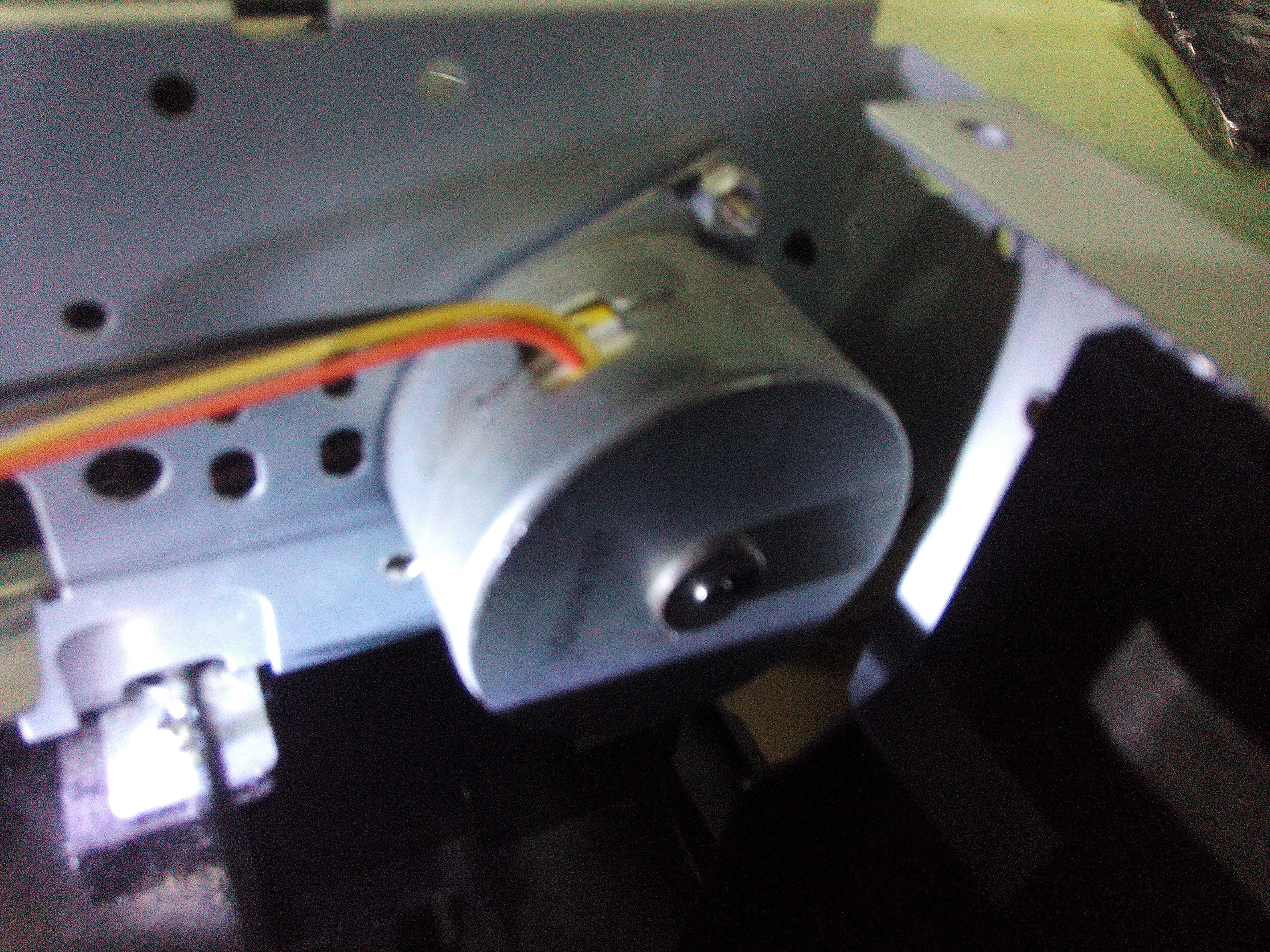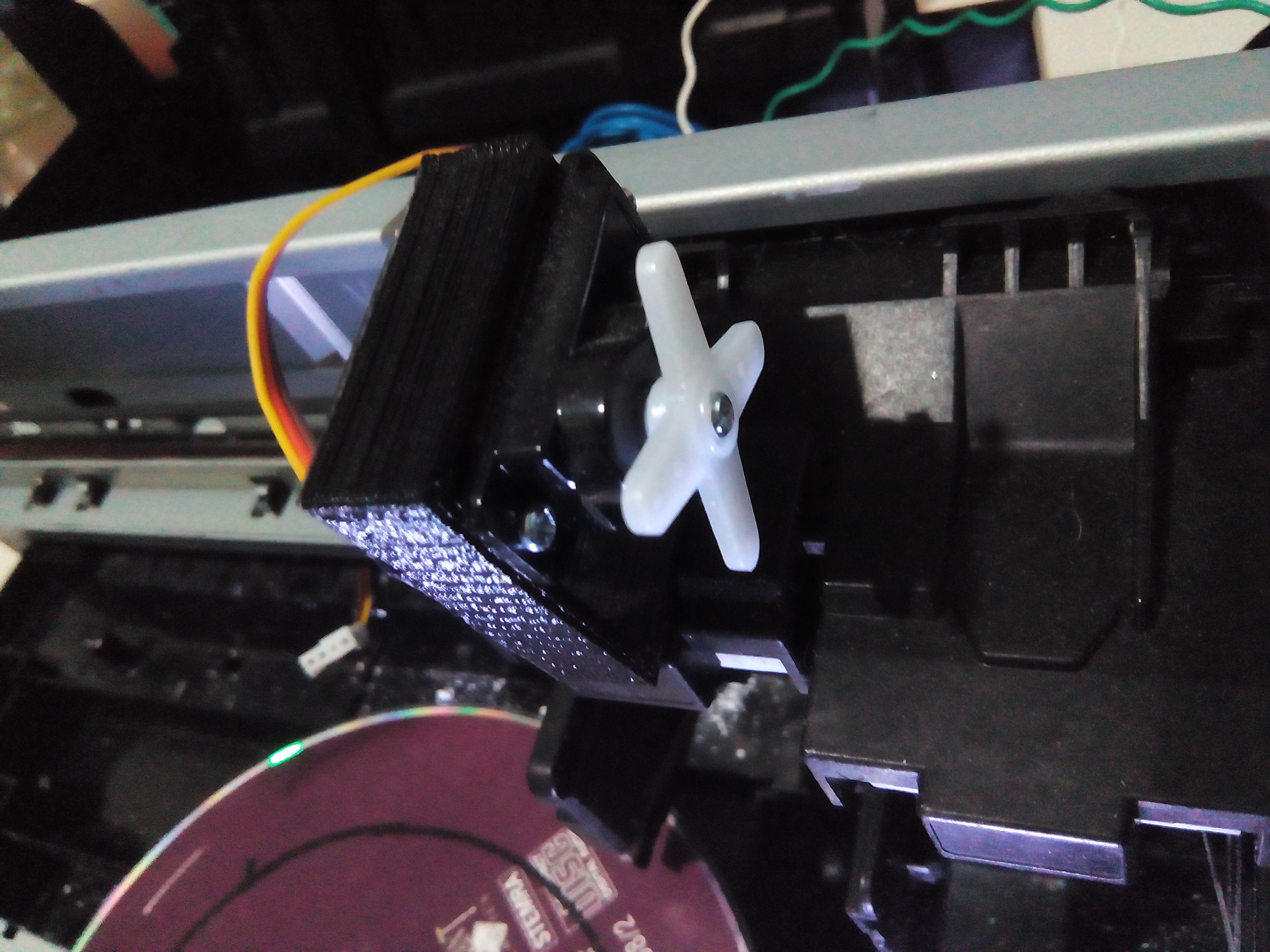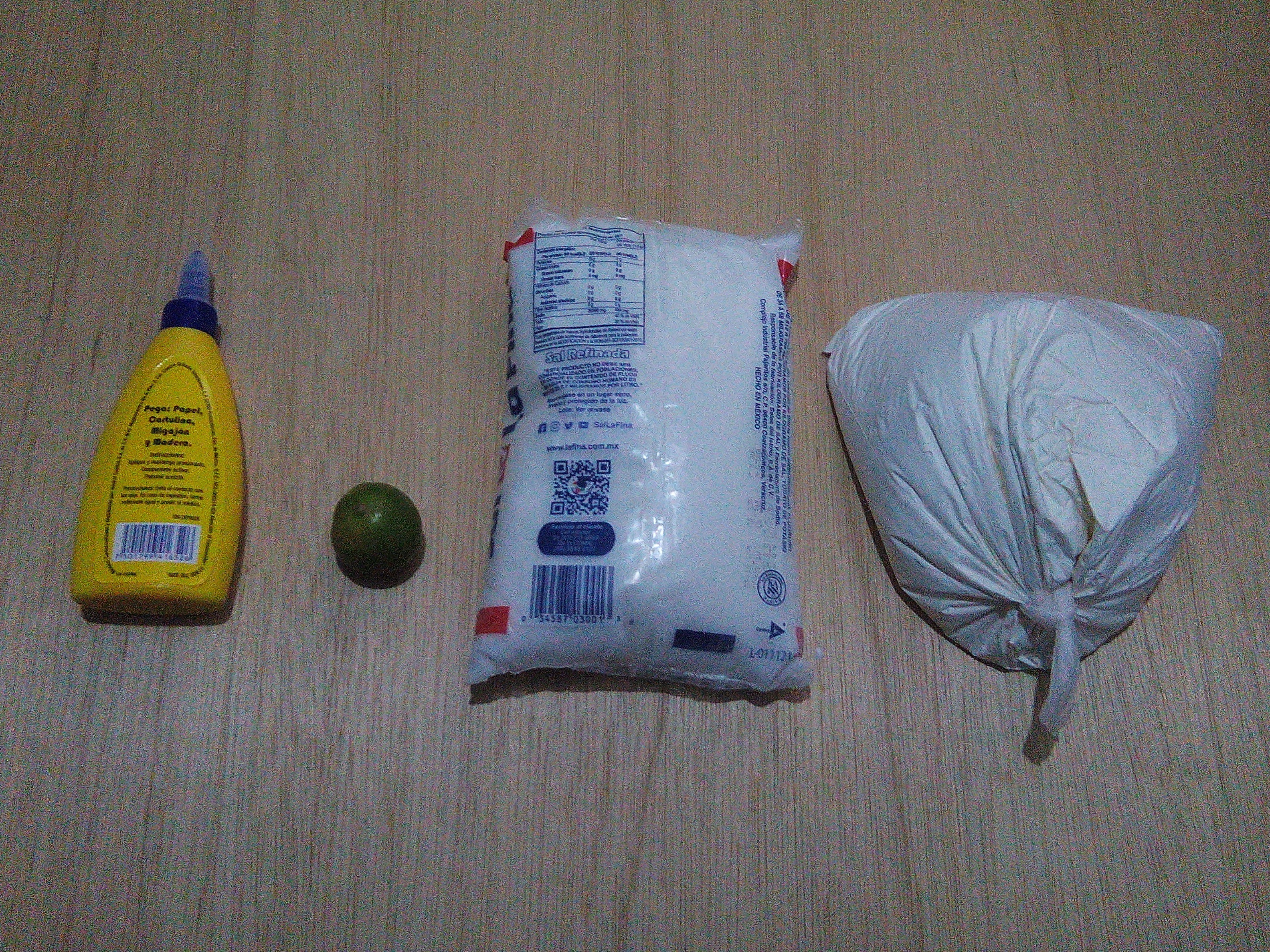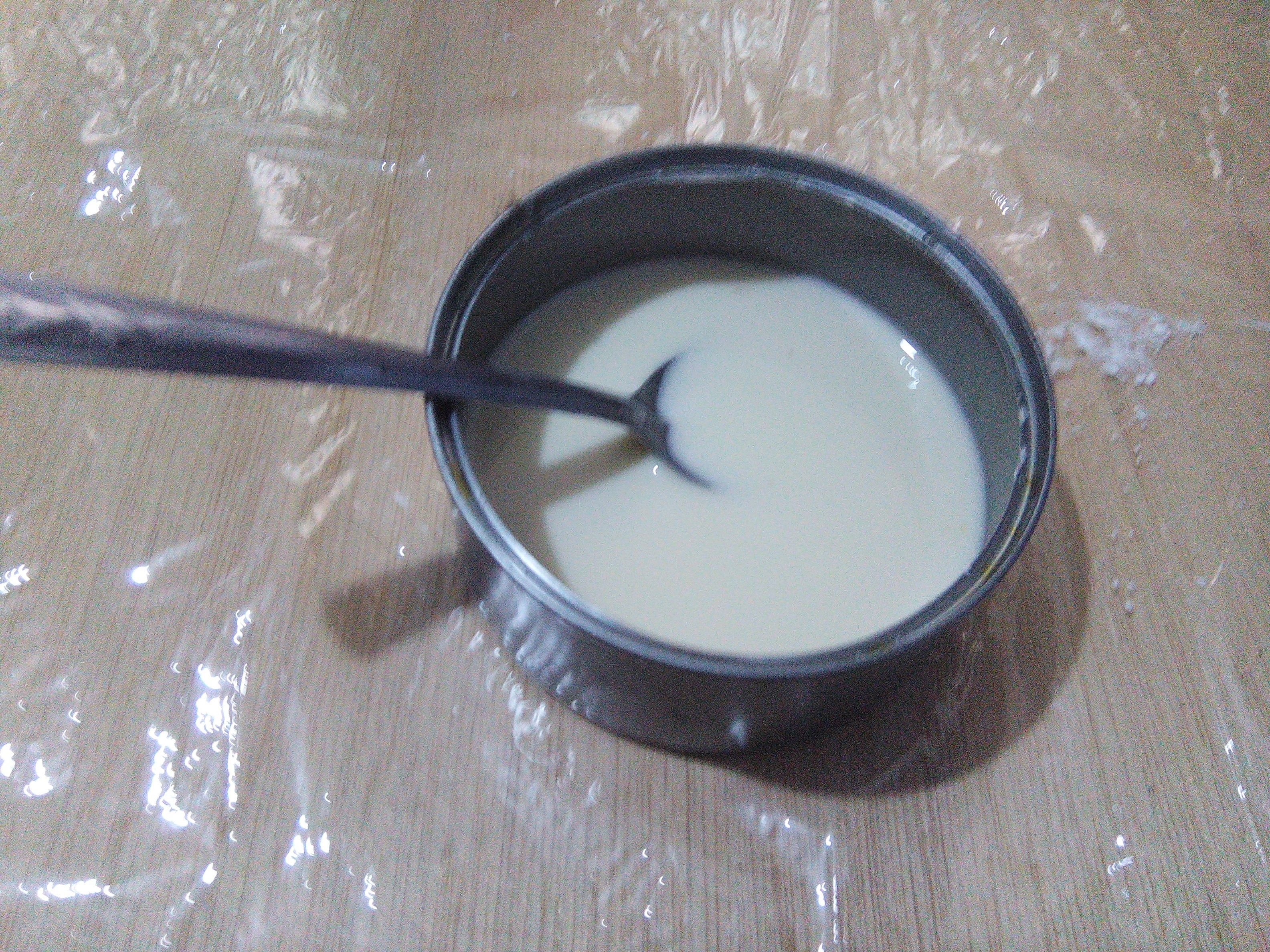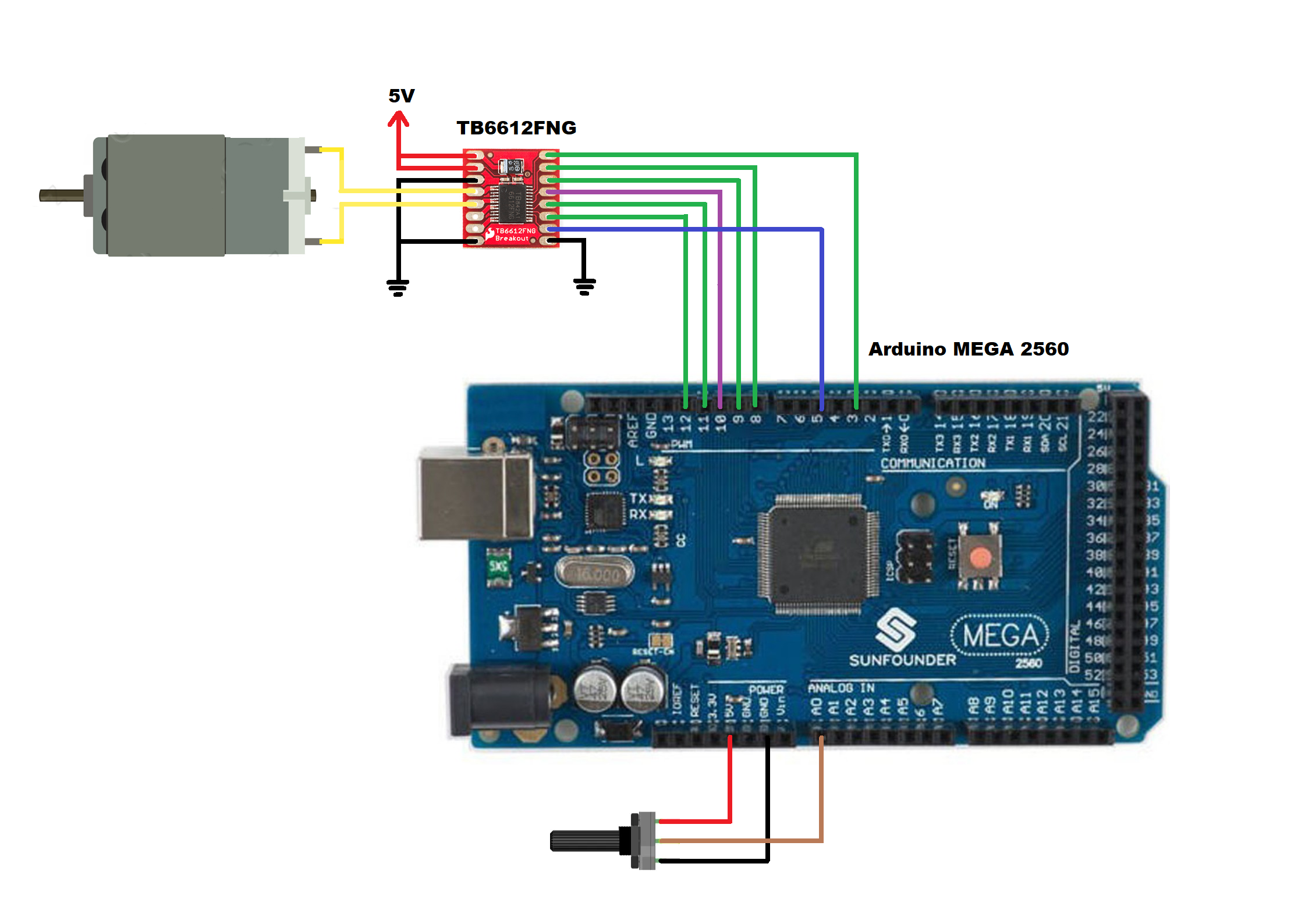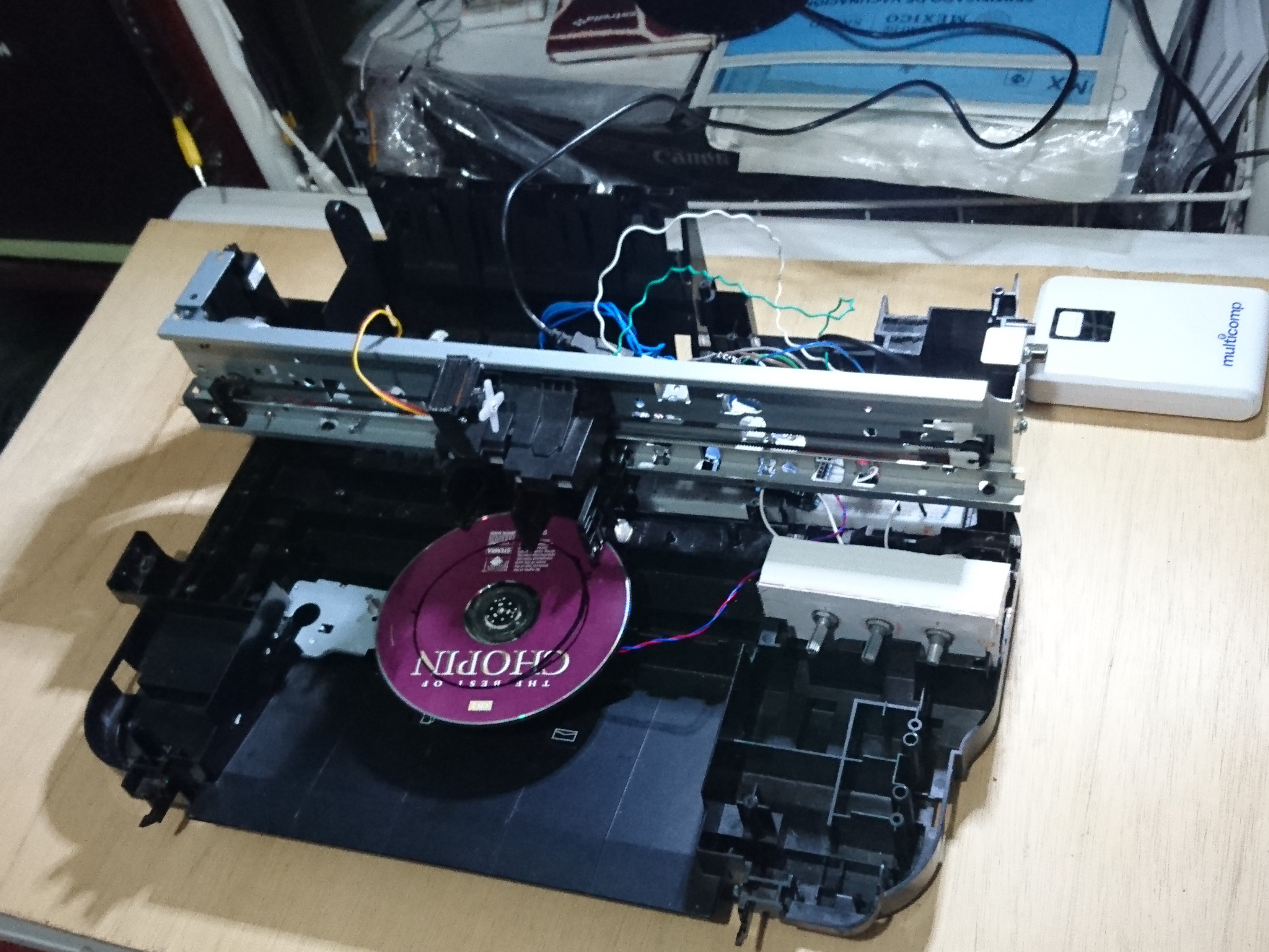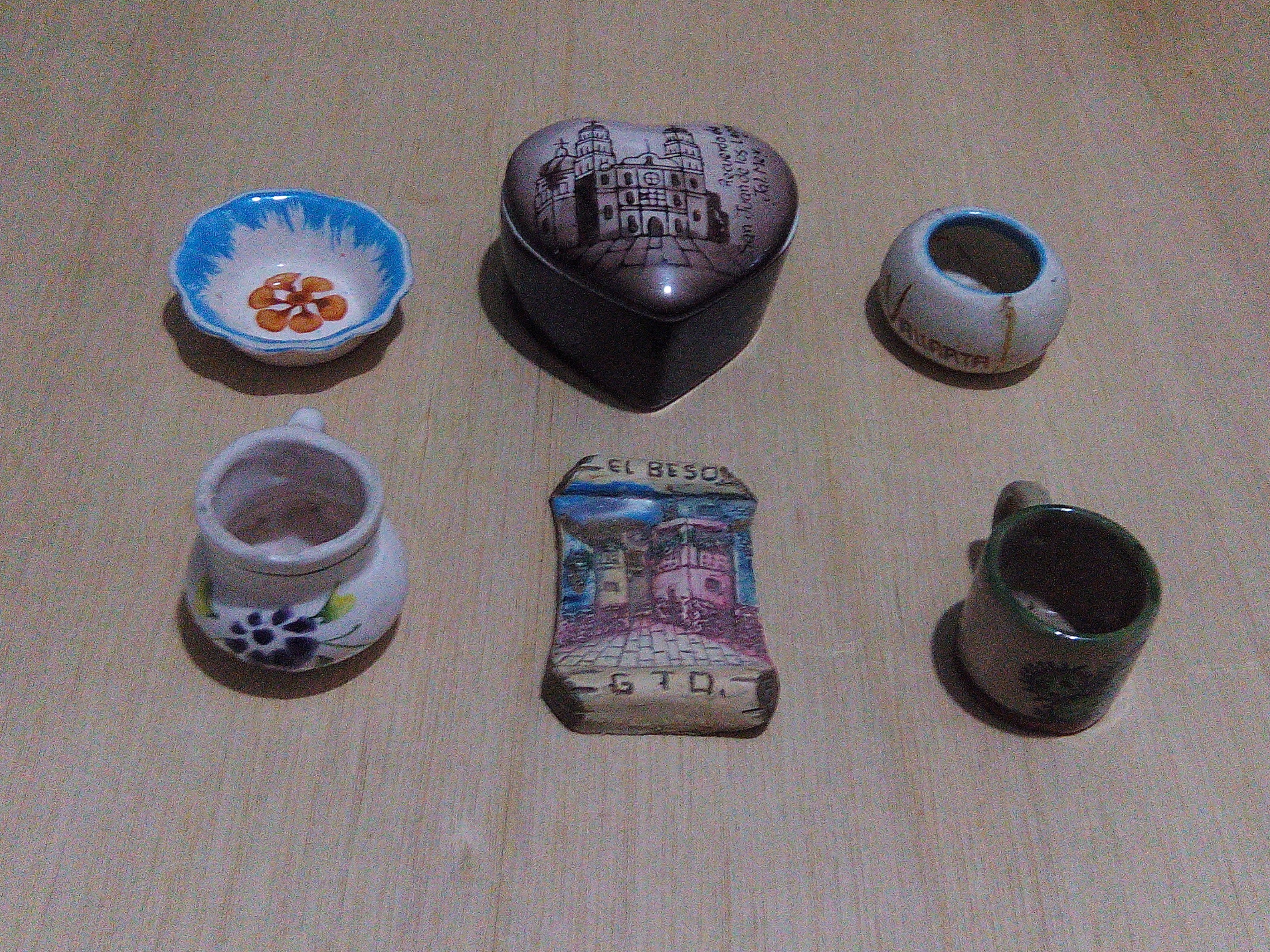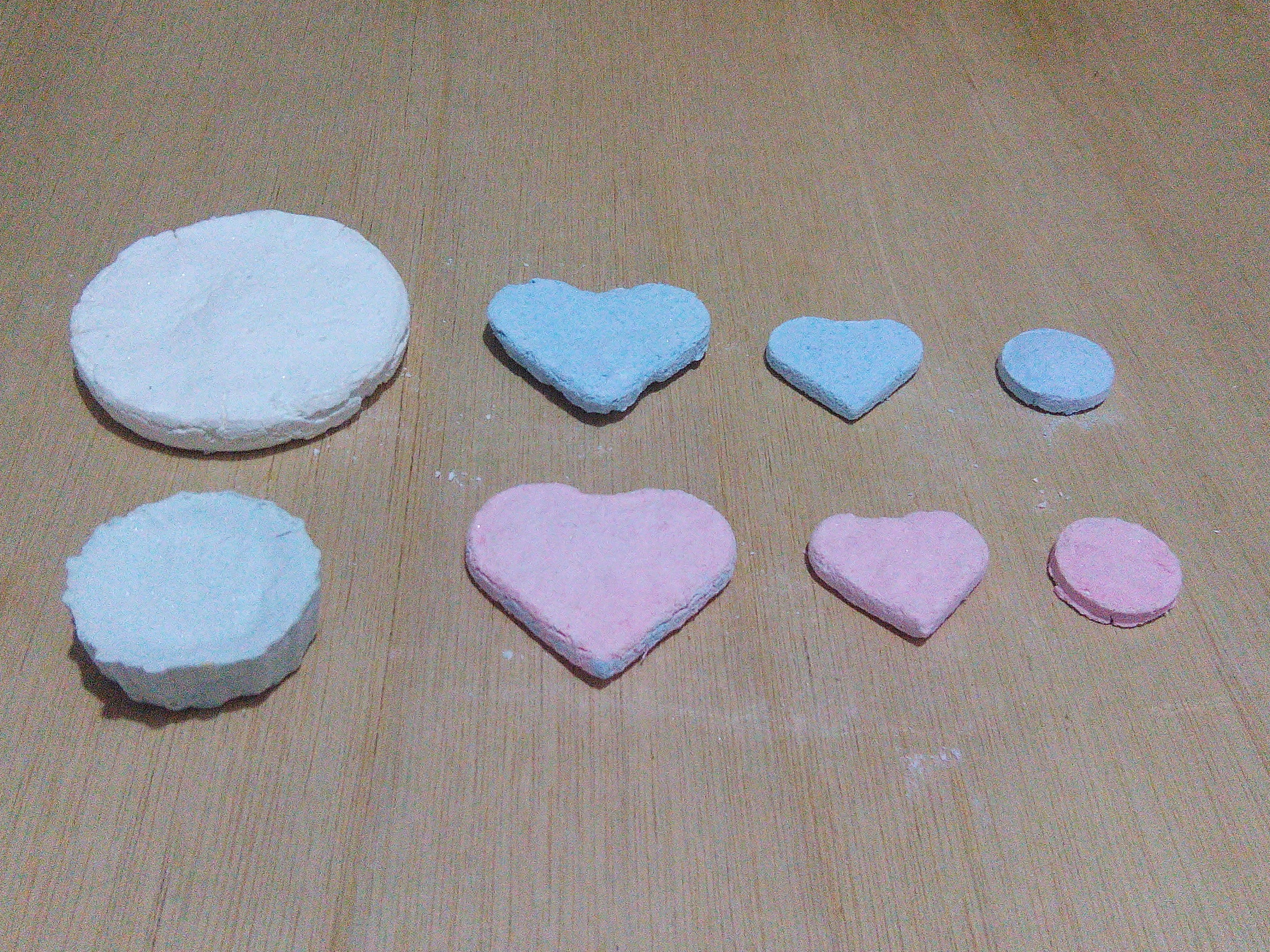-
8. Test and Analysis of the 2nd Version
06/02/2022 at 05:50 • 0 commentsBelow I show you a video with the tests carried out on the second version of this machine.
Another additional test I show you in the video below.
Making grooves in the figures allows me to have more variations in my work. Below I show you some of the samples obtained in this session.
-
7. Groove Mechanism
06/02/2022 at 05:29 • 0 commentsI have added this system in order to create circular or elliptical grooves in the figures created with the cornstarch paste. Once the grooves are finished, I have added cornstarch paste of another color to cover these slots. Below I show you the schematic diagram.
![]()
How does it work?
- By means of the matrix keyboard we control the punch mechanism, that is to say that by pressing the F key the mechanism goes down, and by pressing the E key the mechanism goes up.
- The matrix keyboard also controls the movement of the stepper motor. Eg, pressing the D key moves the mechanism to the first groove position, and If we press the C key, the mechanism returns to the origin.
The punch mechanism was made with parts from an audio player and aluminum angles.
Below I show you the code:
pottery_machine_ver2.ino
// AUTHOR: GUILLERMO PEREZ GUILLEN #include <Keypad.h> #include <Servo.h> #include <Stepper.h> #define STEPS 48 //We put the number of steps you need to go around. 48 in our case // Name of the motor, the number of steps and the control pins Stepper stepper(STEPS, 8, 9, 10, 11); Servo myservo; int pos = 103; const byte ROWS = 4; //four rows const byte COLS = 4; //four columns //define the symbols on the buttons of the keypads char hexaKeys[ROWS][COLS] = { {'0','1','2','3'}, {'4','5','6','7'}, {'8','9','A','B'}, {'C','D','E','F'} }; byte rowPins[ROWS] = {30, 31, 32, 33}; //connect to the row pinouts of the keypad byte colPins[COLS] = {34, 35, 36, 37}; //connect to the column pinouts of the keypad //initialize an instance of class NewKeypad Keypad customKeypad = Keypad( makeKeymap(hexaKeys), rowPins, colPins, ROWS, COLS); void setup(){ Serial.begin(9600); myservo.attach(7); stepper.setSpeed(60); // velocity of the etepper motor at 60 RPM } void loop(){ char customKey = customKeypad.getKey(); // go down the servo if (customKey == 'F'){ Serial.println(customKey); for (pos = 103; pos <= 140; pos += 1) { myservo.write(pos); delay(15); } } // go up the servo if (customKey == 'E'){ Serial.println(customKey); for (pos = 140; pos >= 103; pos -= 1) { myservo.write(pos); delay(15); } } // move the mechanism to the first groove if (customKey == 'D'){ Serial.println(customKey); stepper.step(135); delay(15); } // return the mechanism to the origin if (customKey == 'C'){ Serial.println(customKey); stepper.step(-135); delay(15); } // move the mechanism to the second groove if (customKey == 'B'){ Serial.println(customKey); stepper.step(120); delay(15); } // return the mechanism to the origin if (customKey == 'A'){ Serial.println(customKey); stepper.step(-120); delay(15); } // move the mechanism to the third groove if (customKey == '9'){ Serial.println(customKey); stepper.step(105); delay(15); } // return the mechanism to the origin if (customKey == '8'){ Serial.println(customKey); stepper.step(-105); delay(15); } // move the mechanism to the fourth groove if (customKey == '7'){ Serial.println(customKey); stepper.step(90); delay(15); } // return the mechanism to the origin if (customKey == '6'){ Serial.println(customKey); stepper.step(-90); delay(15); } } -
6. Updating Speed Control
06/02/2022 at 04:54 • 0 commentsAs part of the hardware updates, I have re-designed my project and in the image below I show you the schematic diagram of the speed control.
![]()
Below I show you an image of these devices.
![]()
In this way I optimized the spaces, and the energy consumption is lower with this Arduino Nano 33 BLE Sense board. Next I show you the code.
speed_control.ino
//AUTHOR: GUILLERMO PEREZ GUILLEN #define POT A0 // Pot 10k int raw_pot; // Store value of the pot int duty; // duty cycle - PWM int STBY = 10; // standby pin // motor A int PWMA = 3; // velocity int ain1 = 9; int ain2 = 8; // motor B int PWMB = 5; // velocity int bin1 = 11; int bin2 = 12; void setup(){ pinMode(STBY, OUTPUT); pinMode(PWMA, OUTPUT); pinMode(ain1, OUTPUT); pinMode(ain2, OUTPUT); pinMode(PWMB, OUTPUT); pinMode(bin1, OUTPUT); pinMode(bin2, OUTPUT); } void loop(){ raw_pot = analogRead(POT); duty = map(raw_pot, 0, 1023, 0, 255); // range vaalue from 0-255 mover(1, duty, 1); // motor 1, velocity, forward mover(2, duty, 1); // motor 2, velocity, forward delay(50); // 50 ms } void mover(int motor, int velocidad, int direccion){ //Let's define the move function, a acciona un motor, fijar su velocidad y el sentido de giro. Definimos: //motor: llamaremos 1 al motor A, y 2 al motor B //velocity: from 0 to 255 //direction: 0 for clockwise, 1 for counter-clock wise digitalWrite(STBY, HIGH); //disable standby to move boolean inPin1 = LOW; // we create the boolean variable (it can only be HIGH/LOW) inpin1 boolean inPin2 = HIGH; // and we assign the value LOW. To inPin2 we give the value HIGH if(direccion == 1){ inPin1 = HIGH; inPin2 = LOW; } if(motor == 1){ digitalWrite(ain1, inPin1); digitalWrite(ain2, inPin2); analogWrite(PWMA, velocidad); }else{ digitalWrite(bin1, inPin1); digitalWrite(bin2, inPin2); analogWrite(PWMB, velocidad); } } void stop(){ // standby action digitalWrite(STBY, LOW); } -
5. Test and Conclusion
05/23/2022 at 02:15 • 0 commentsIn the video below I show you the device already assembled and ready to experiment with homemade cornstarch clay.
Here are some experiments I did with this homemade clay.
Conclusion:
- In this first version, I learned to make basic forms of pottery with this homemade clay made mainly with cornstarch;
- I discovered that hardness depends on the quality and consistency of the mixed materials;
- The idea of controlling the spin speed of the CD-rom was useful since sometimes we only require a slow spin and sometimes a fast spin;
- In the second version I have the idea to add and use a stepper motor and a servo motor in order to add details to the final product, for the moment I have only assembled these devices as shown in the image below.
![]()
![]()
-
4. Homemade Clay with Cornstarch
05/23/2022 at 02:00 • 0 commentsModeling clay has one main drawback: the high cost price. It is a material that, although it is within the reach of most people, it is also true that it is considered expensive for those who do not have a clear idea of its use or simply do not know how to use it correctly yet and, therefore, might think that They waste the investment. For this reason, you can start learning with another material similar to the clay that artists use and it is also convenient to know several methods to make homemade moldable clay in order to have it without having to buy it, because although it is not exactly the same as the used by artists can be used to practice or to entertain children for a long time and get them to learn while having fun.
Many people, when thinking of making homemade clay for children, may also be thinking of a material such as plasticine or polymer clay (also called Fimo). However, although they are moldable materials that may have similarities, several aspects must be taken into account. In the case of polymer clay and plasticine, we can indicate some important aspects:
- Unlike plasticine, this clay hardens when heated in the oven.
- Polymer clay has the ability to combine different colors. It gives the option of mixing two tones, thus creating an original marbled effect. If you prolong the kneading a lot, you will end up obtaining a homogeneous mixture, that is, a polymer clay of another color.
- Polymer clays are made from plasticized PVC. If you want to harden once the figures are created, these clays have to be baked between 110 °C and 130 °C.
- If you were wondering how to make polymer clay, we are sorry to tell you that it is not possible to make Fimo clay, since the plastic ingredients it is made of are only available to companies and professionals on the market, not to individuals. So if you want exactly this type of clay you can only buy it.
After knowing all this, we help you discover how to make homemade clay with different easy-to-find materials. We start by teaching you how to make clay with cornstarch, cornstarch or starch or corn flour.
Ingredients
- Cornstarch.
- Salt.
- Water.
- Acrylic paint or food coloring.
- White glue used in furniture (optional)
![]()
Steps to make homemade clay with cornstarch
- Mix the cornstarch with the salt in a bowl. Use the amount you consider appropriate depending on the project you have in mind to work with the clay, but you should always add twice as much flour as salt.
- Gradually add water to the mixture. Do it using small spoonfuls to stir it with the flour and salt until you get the ideal texture.
- If you detect that the mixture is getting especially sticky, choose to add more flour. Thus, the material will have a greater consistency.
- Add the food coloring to add color to the clay if you want.
- Finally, knead the mixture and you can start creating figures with this homemade material.
![]()
-
3. Software
05/23/2022 at 01:33 • 0 commentsI have used the Arduino IDE to experiment with this device, because it has many free tools that can be easily worked with. Next I show you the code in its first version.
pottery_machine_ver1.ino
//AUTHOR: GUILLERMO PEREZ GUILLEN #define POT A0 // Pot 10k int raw_pot; // Store value of the pot int duty; // duty cycle - PWM int STBY = 10; // standby pin // motor A int PWMA = 3; // velocity int AIN1 = 9; int AIN2 = 8; // motor B int PWMB = 5; // velocity int BIN1 = 11; int BIN2 = 12; void setup(){ pinMode(STBY, OUTPUT); pinMode(PWMA, OUTPUT); pinMode(AIN1, OUTPUT); pinMode(AIN2, OUTPUT); pinMode(PWMB, OUTPUT); pinMode(BIN1, OUTPUT); pinMode(BIN2, OUTPUT); } void loop(){ raw_pot = analogRead(POT); duty = map(raw_pot, 0, 1023, 0, 255); // range vaalue from 0-255 mover(1, duty, 1); // motor 1, velocity, forward mover(2, duty, 1); // motor 2, velocity, forward delay(50); // 50 ms } void mover(int motor, int velocidad, int direccion){ //Let's define the move function, a acciona un motor, fijar su velocidad y el sentido de giro. Definimos: //motor: llamaremos 1 al motor A, y 2 al motor B //velocity: from 0 to 255 //direction: 0 for clockwise, 1 for counter-clock wise digitalWrite(STBY, HIGH); //disable standby to move boolean inPin1 = LOW; // we create the boolean variable (it can only be HIGH/LOW) inpin1 boolean inPin2 = HIGH; // and we assign the value LOW. To inPin2 we give the value HIGH if(direccion == 1){ inPin1 = HIGH; inPin2 = LOW; } if(motor == 1){ digitalWrite(AIN1, inPin1); digitalWrite(AIN2, inPin2); analogWrite(PWMA, velocidad); }else{ digitalWrite(BIN1, inPin1); digitalWrite(BIN2, inPin2); analogWrite(PWMB, velocidad); } } void stop(){ // standby action digitalWrite(STBY, LOW); }It is not complicated to analyze this code. We simply configure the microcontroller outputs to be able to use the TB6612FNG driver. The duty cycle of the PWM signal is regulated by means of a potentiometer placed on port A0.
-
2. Hardware
05/23/2022 at 01:23 • 0 commentsIn the image below I show you the electrical diagram of the device in its first version.
![]()
How does it work?
- By means of the 10k potentiometer, we can regulate the turning speed of the 5 volt DC motor;
- We can increase or decrease the duty cycle of the PWM signal, and therefore the speed of the motor.
As I explained in my project description, I have reused an old printer and some of its components to create this device. I have also recycled an old cd-player and added it to place the pottery dough and its molds on top. Next I show you what this device looks like.
-
1. Introduction
05/23/2022 at 00:44 • 0 commentsPottery is the process and the products of forming vessels and other objects with clay and other ceramic materials, which are fired at high temperatures to give them a hard and durable form. Major types include earthenware, stoneware and porcelain. The place where such wares are made by a potter is also called a pottery. In art history and archaeology, especially of ancient and prehistoric periods, "pottery" often means vessels only, and sculpted figurines of the same material are called "terracottas".
Pottery is one of the oldest human inventions, originating before the Neolithic period, with ceramic objects like the Gravettian culture Venus of Dolní Věstonice figurine discovered in the Czech Republic dating back to 29,000–25,000 BC, and pottery vessels that were discovered in Jiangxi, China, which date back to 18,000 BC.
In my case, I was inspired by the miniature pottery that is built in my country, below I show you an image of these samples:
![]()
I got into this interesting art, but looking for homemade, not industrial goals. I discovered that some people use cornstarch to make a simple but attractive craft that can be experimented with, and even this can be viable for marketing in a sustainable way. Below I show you some experiences that I have achieved.
![]()
3D Pottery Machine for kids' STEM education
Cornstarch mini pottery machine, built with an old printer and cd-player, and useful for kids' STEM education
 Guillermo Perez Guillen
Guillermo Perez Guillen